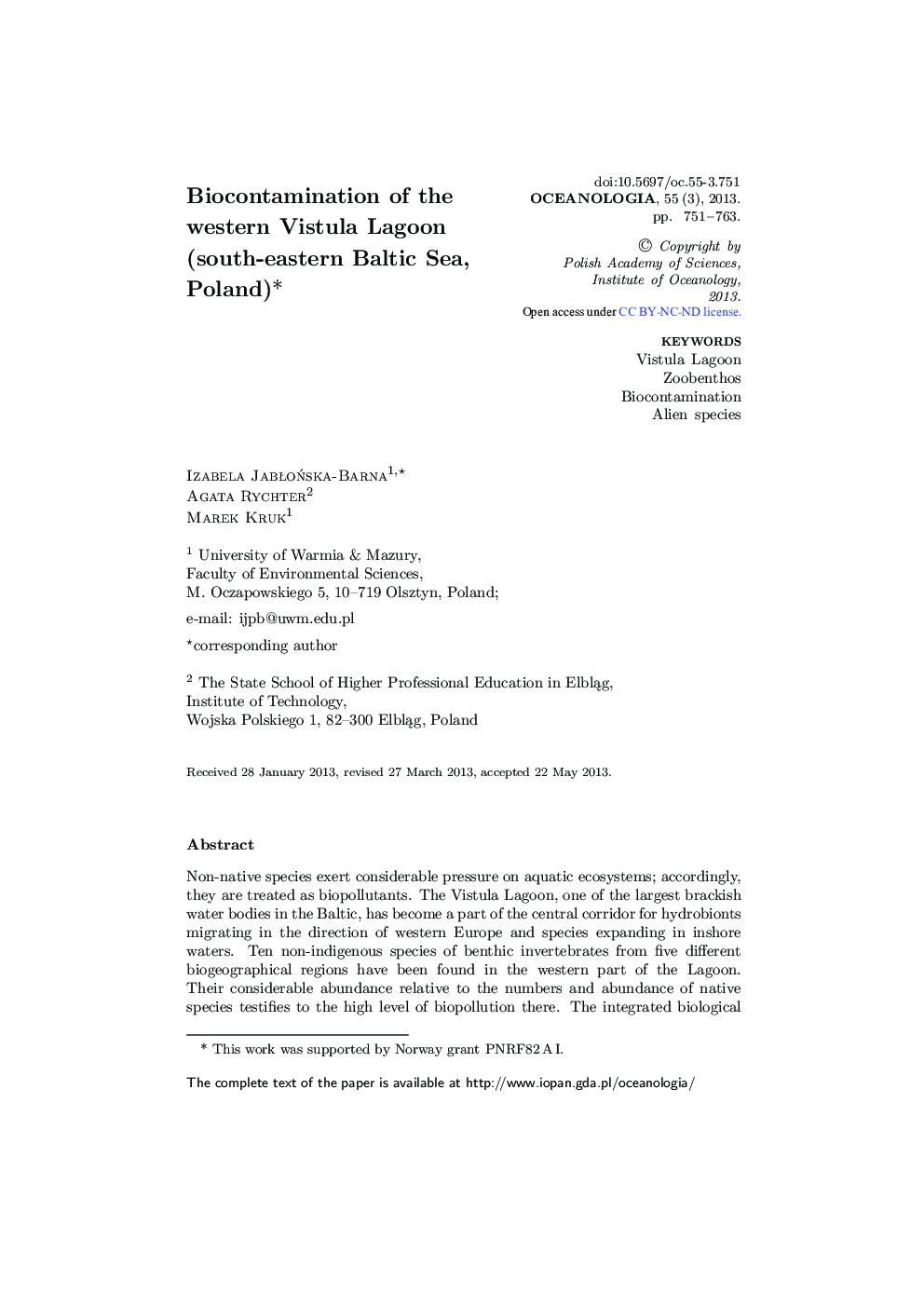| Article ID | Journal | Published Year | Pages | File Type |
|---|---|---|---|---|
| 2069904 | Oceanologia | 2013 | 13 Pages |
Non-native species exert considerable pressure on aquatic ecosystems; accordingly, they are treated as biopollutants. The Vistula Lagoon, one of the largest brackish water bodies in the Baltic, has become a part of the central corridor for hydrobionts migrating in the direction of western Europe and species expanding in inshore waters. Ten non-indigenous species of benthic invertebrates from five different biogeographical regions have been found in the western part of the Lagoon. Their considerable abundance relative to the numbers and abundance of native species testifies to the high level of biopollution there. The integrated biological contamination index (IBC) calculated for the macrobenthos in the western Vistula Lagoon was 4 and corresponds to the Lagoon’s poor ecological status.
